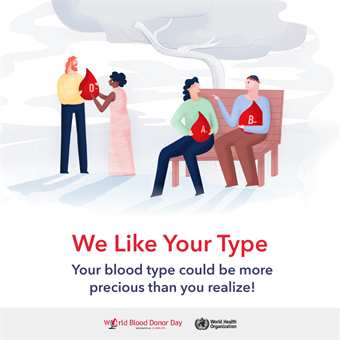Who is most at risk?
Children under the age of 5
Substantial global progress has been made in reducing child deaths since 1990. The total number of under-5 deaths worldwide has declined from 12.6 million in 1990 to 5.3 million in 2018. On average, 15 000 children under-5 die each day compared with 34 000 in 1990. Since 1990, the global under-5 mortality rate has dropped by 59%, from 93 deaths per 1,000 live births in 1990 to 39 in 2018. This is equivalent to 1 in 11 children dying before reaching age 5 in 1990, compared to 1 in 26 in 2018.
Although the world as a whole has been accelerating progress in reducing the under-5 mortality rate, disparities exist in under-5 mortality across regions and countries. Sub-Saharan Africa remains the region with the highest under-5 mortality rate in the world, with 1 child in 13 dying before his or her fifth birthday, 15 times higher than in high income countries. Two regions, Sub-Saharan Africa and Central and Southern Asia, account for more than 80 per cent of the 5.3 million under-five deaths in 2018, while they only account for 52 per cent of the global under-five population. Half of all under-five deaths in 2018 occurred in just five countries: India, Nigeria, Pakistan, Ethiopia and the Democratic Republic of the Congo. India and Nigeria alone account for about a third.
More than half of under-5 child deaths are due to diseases that are preventable and treatable through simple, affordable interventions. Strengthening health systems to provide such interventions to all children will save many young lives.
Malnourished children, particularly those with severe acute malnutrition, have a higher risk of death from common childhood illness such as diarrhoea, pneumonia, and malaria. Nutrition-related factors contribute to about 45% of deaths in children under-5 years of age.
Leading causes of death in post-neonatal children: risk factors and response
| Cause of death | Risk factors | Prevention | Treatment |
| Pneumonia, or other acute respiratory infections |
Low birth weight |
Antenatal care visits for mother Vaccination |
Appropriate care by a trained health provider Antibiotics Oxygen for severe illness |
| Childhood diarrhoea | Non-breastfed children Unsafe drinking water and food Poor hygiene practices Malnutrition |
Exclusive breastfeeding Safe water and food Adequate sanitation and hygiene Adequate nutrition Vaccination |
Low-osmolarity oral rehydration salts (ORS) Zinc supplements |
Prevention with vaccines
Vaccines are available for some of the most deadly childhood diseases, such as measles, polio, diphtheria, tetanus, pertussis, pneumonia due to Haemophilius influenzae type B and Streptococcus pneumonia and diarrhoea due to rotavirus. Vaccines can protect all children from illness and death.
Emerging priorities for children’s health
Congenital anomalies, injuries, and non-communicable diseases (chronic respiratory diseases, acquired heart diseases, childhood cancers, diabetes, and obesity) are the emerging priorities in the global child health agenda. Congenital anomalies affect an estimated 1 in 33 infants, resulting in 3.2 million children with disabilities related to birth defects every year. The global disease burden due to non-communicable diseases affecting children in childhood and later in life is rapidly increasing, even though many of the risk factors can be prevented.
Similarly, the worldwide number of overweight children increased from an estimated 31 million in 2000 to 42 million in 2015, including in countries with a high prevalence of childhood undernutrition.
Global response: Sustainable Development Goal 3
The Sustainable Development Goals (SDGs) adopted by the United Nations in 2015 were developed to promote healthy lives and well-being for all children. The SDG Goal 3 is to end preventable deaths of newborns and under-5 children by 2030. There are two targets:
- reduce newborn mortality to at least as low as 12 per 1 000 live births in every country (SDG 3.2); and
- Reduce under-five mortality to at least as low as 25 per 1,000 live births in every country (SDG 3.2).
Target 3.2 is closely linked with target 3.1, to reduce the global maternal mortality ratio to less than 70 deaths per 100 000 live births, and target 2.2 on ending all forms of malnutrition, as malnutrition is a frequent cause of death for under-5 children. These have been translated into the new "Global Strategy for Women’s, Children’s and Adolescent’s Health" (Global Strategy), which calls for ending preventable child deaths while addressing emerging child health priorities. Member States need to set their own targets and develop specific strategies to reduce child mortality and monitor their progress towards the reduction.
Accelerated progress will be needed in more than a quarter of all countries, to achieve the Sustainable Development Goal (SDG) target [1] on under-five mortality by 2030. Meeting the SDG target would reduce the number of under-5 deaths by 10 million between 2017 and 2030. Focused efforts are still needed in Sub-Saharan Africa and South East Asia to prevent 80 per cent of these deaths.
WHO response
WHO calls on Member States to address health equity through universal health coverage so that all children are able to access essential health services without undue financial hardship. Moving from “business as usual” to innovative, multiple, and tailored approaches to increase access, coverage, and quality of child health services will require strategic direction and an optimal mix of community and facility (based care. Health sector and multisectoral efforts are also needed to overcome the inequalities and the social determinants of health.





